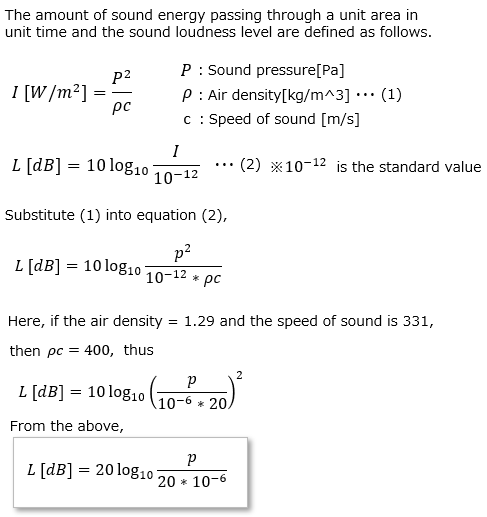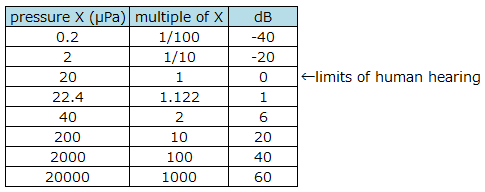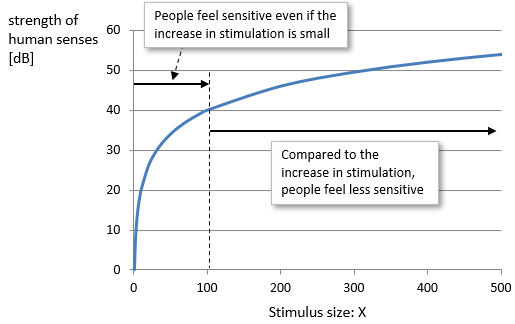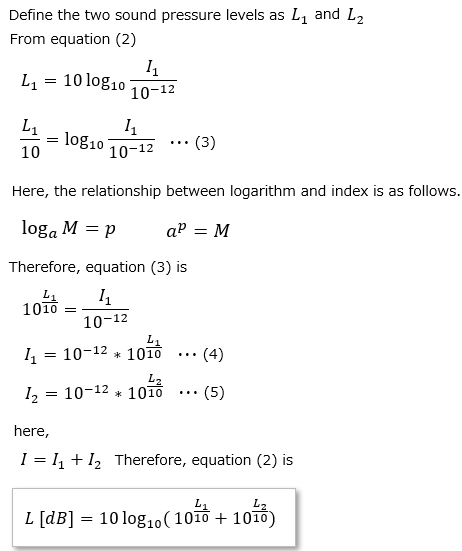What is decibel [dB]? How to calculate and add decibels |
||||
・Exponential function ・Arctan, tanh ・Matrix multiplication ・Transposed matrix ・Fourier transform ・Fast Fourier Transform ・Matrix derivative ・Manhattan/Euclidean distance ・Centroid ・Vertical bar ・Gaussian integral ・Cosine similarity ・summation Σ, product Π ・Decibel[dB] ・Numerical Differention ・Induction,deduction,abduction ・Spline curve ・Lagrange's Method of Undetermined Multipliers ・Purpose of the matrix ・Proof by contradiction ・Vector field |
・In Japanese
■What is decibel [dB]?
Decibel is a unit of sound loudness. The volume of sound is originally measured in sound pressure (unit: Pa), but sound pressure has a wide range of values, and as the value increases, the loudness perceived by humans becomes less consistent with our senses.
Therefore, we use logarithms to express the loudness of sound.
<Derivation of the formula> ■Characteristics of decibels
When the sound pressure is 20 μPa, which is said to be the limit of human hearing, it is 0 decibels.
Also, since the sound pressure increases by 20 dB every 10 times, this characteristic is also called 20 dB/dec. (dec stands for decade) ■Addition of decibels
Decibels are logarithmic, so they cannot be added directly. Therefore, 50dB+50dB=100dB will not occur. To add decibels, you need to do the following
|
|
||





